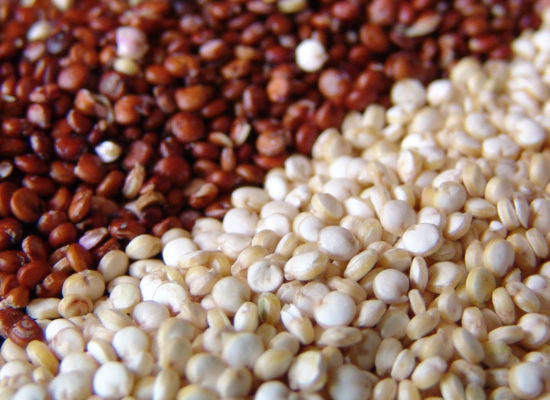Quinoa was known by the Incas as “the Mother Grain.â€Â It’s no wonder, as it’s full of nourishment. The nutritional quality of quinoa has been compared to that of dried whole milk by the Food and Agriculture Organization (FAO) of the United Nations.1. Quinoa is considered a complete protein as it contains all eight of the essential amino acids that are required by the human body to aid digestion. It also has a high content of unsaturated fats to provide sustenance and has fewer carbs than most grains so it won’t weigh us down. 2. Yet another benefit is that quinoa is a gluten free grain. In fact, quinoa is not a true cereal as it is not a member of the grass family (Poceae). Rather it grows as a plant that resembles spinach with clusters of small seeds on the stems. When hulled and dried, these seeds are what we know of as quinoa. 3 .
Quinoa is very versatile when cooking, and offers a perfect substitute for the typical gluttonous or high-carb grains. It has a slightly nutty flavor which complements both sweet and savory dishes. It can be added to soups and stews (e.g. Miso Tahini Soup), ground into a flour for gluten-free baking and offers a perfect substitute for processed grains like cous cous or bulgur (same ratio – 2 parts water: 1 part quinoa). Quinoa is considered to be balancing to all body-mind types, but is particularly good for the vata types that benefit from easily digestible proteins.
Most quinoa purchased in North America is currently imported from South America. But there is hope of growing it in the U.S.. Field trials and research on developing quinoa as a crop here is being conducted in Colorado. Results show that there is potential to grow quinoa in southern Colorado, northern New Mexico and Eastern Washington. 4.  So let’s do our part in driving the market for locally grown quinoa!
- http://www.hort.purdue.edu/newcrop/afcm/quinoa.html [↩]
- Edible, An Illustrated Guide to the World’s Food Plants. National Geographic (2008), 218 [↩]
- Edible, An Illustrated Guide to the World’s Food Plants. National Geographic (2008), 218 [↩]
- http://www.hort.purdue.edu/newcrop/afcm/quinoa.html [↩]



Leave a Reply